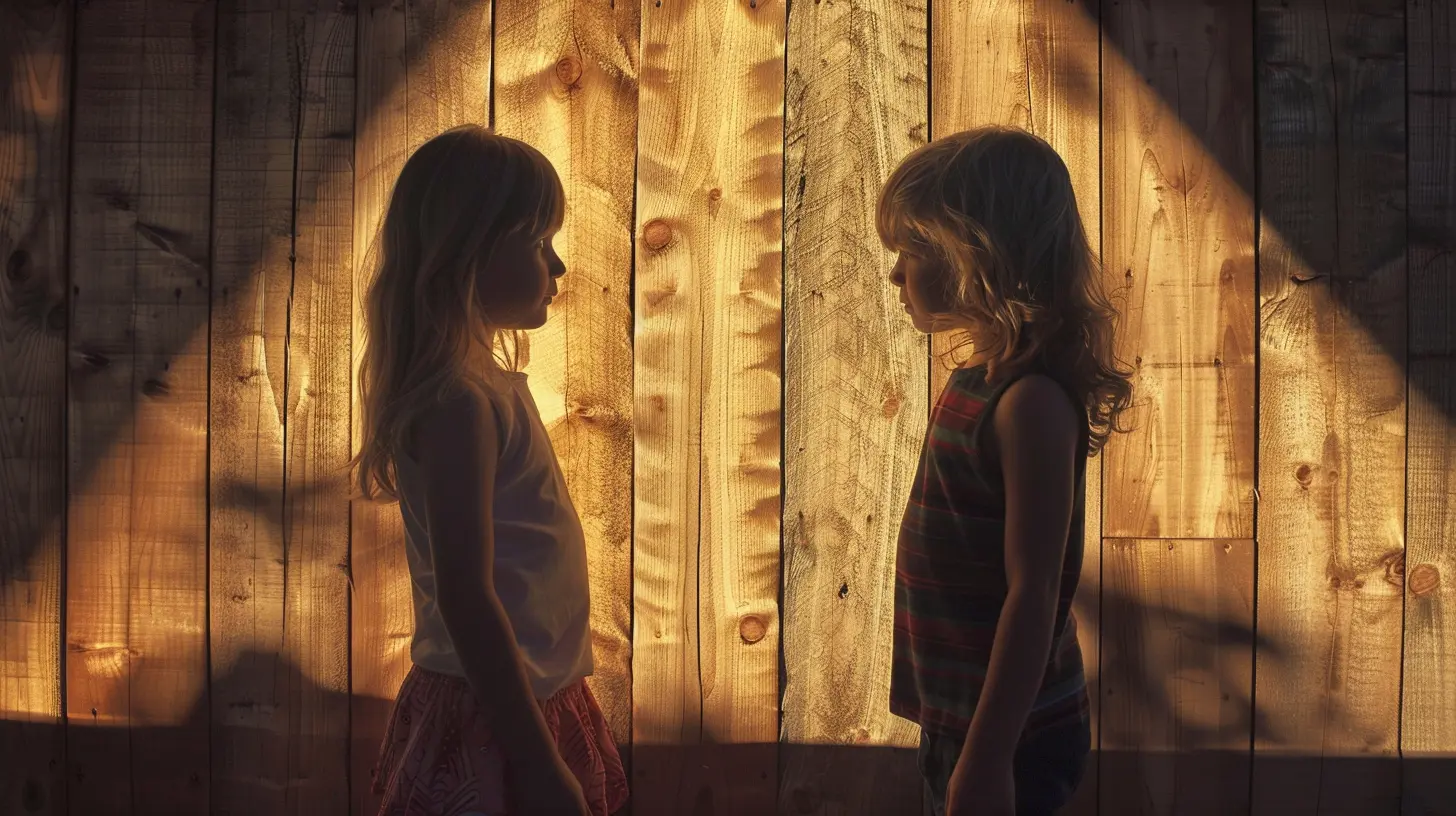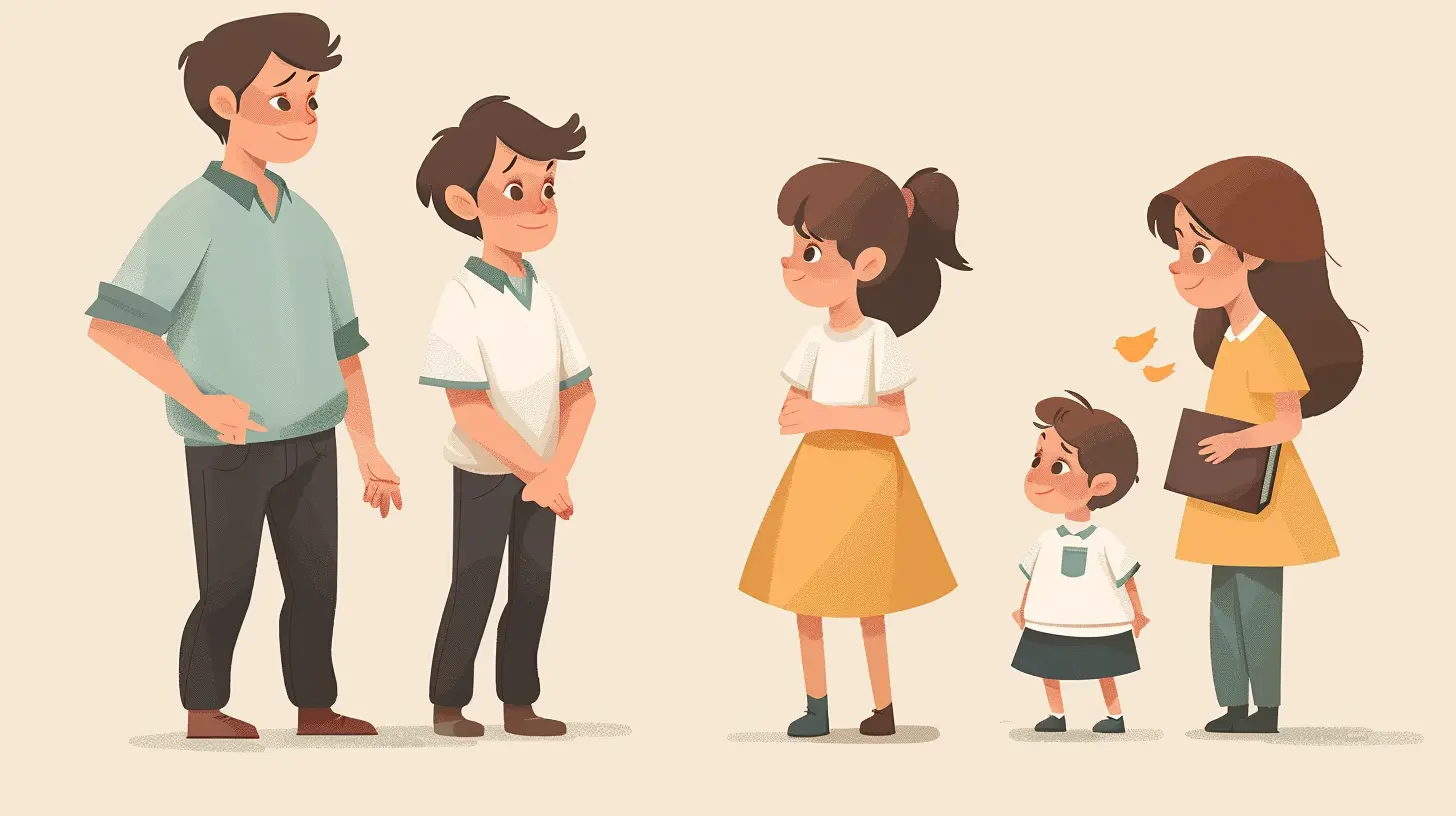Boundaries in Public: Teaching Children How to Behave in Social Settings
29 July 2025
Let’s face it—taking kids out in public can sometimes feel like setting off fireworks inside a library. One minute your toddler is waving politely, and the next, they’re screaming because their cookie broke in half. We’ve all been there (yes, even the calm-looking mom at aisle four). The truth is, teaching kids how to behave in public spaces is part survival skill, part long-term investment. And the key ingredient? Boundaries.
In this post, we’re talking about boundaries in public—what they are, why they matter, and how to teach them without sounding like a drill sergeant or bribing your kid with another toy. Ready? Let’s dive in.
What Are Boundaries and Why Do Kids Need Them?
Here's the thing: boundaries aren't fences to keep kids caged in—they’re more like invisible guide rails that keep them from careening off the social highway.Boundaries help children understand what behaviors are okay and what aren’t. They're tools for helping kids respect others, manage emotions, and navigate social settings without turning a calm dinner out into a three-ring circus.
Think of boundaries like traffic rules. You don’t let your child just zoom into the street, right? Social boundaries are the stop signs, yield signs, and speed limits of daily life.
So why exactly are these boundaries so important? Simple:
- They promote self-discipline.
- They teach empathy and respect.
- They provide consistency and predictability.
- They reduce anxiety (for you and your child).
- They foster independence in the long run.
It Starts At Home: The Foundation for Public Behavior
Let’s not wait until we’re in the checkout line to teach limits. Kids thrive on routine and consistency, and setting behavioral expectations at home first is like prepping for the championship before the big match.If your child learns at home that yelling isn’t an acceptable way to express frustration or that hitting leads to consequences, they're more likely to generalize those rules in public spaces.
Practical Tips:
- Role-play scenarios: Pretend you’re at a restaurant or library and practice “inside voices,” taking turns, and being patient.- Use simple language: “When we’re in the store, we walk, not run,” is clearer than “Don’t misbehave.”
- Reinforce often: Repetition isn’t just for multiplication tables. Kids need reminders.

Communicate Expectations Before You Go Out
Preparation is everything—especially with small humans who think pants are optional and personal space is a suggestion.Before stepping out the door, have a quick and clear talk with your child. Keep it short and age-appropriate.
Example: “We’re going to the doctor’s office. We’ll sit quietly, listen when someone talks, and wait our turn. If you need something, tap me on the arm.”
Key Phrases to Try:
- “Let’s use our library voice.”- “Your hands stay to yourself.”
- “We always say ‘excuse me’ if we bump into someone.”
By setting the stage before you even leave home, you reduce the surprise factor and brace your child with tools they can actually use.
Consistency Is Your Secret Weapon
Here’s a big parenting truth bomb: inconsistency breeds chaos. If you let something slide once but correct it the next time, your child’s natural reaction is confusion.Let’s say your child throws a tantrum at the park and you ignore it once but fight it the next day. That mixed message just makes things murky. Kids need clarity to develop confidence in how to behave.
How to Stay Consistent:
- Stick to your word: If you say you’ll leave the store if they scream, follow through.- Establish consequences: Make them age-appropriate, and always follow up.
- Praise the good: Yes, even if it’s something small like saying “excuse me.”
Consistency shows kids where the lines are—and that they’re not up for negotiation every five minutes.
Use Natural Consequences
Kids are concrete learners. If they touch something unsafe and it’s hot, they learn quickly to avoid it next time. You can use that same logic when setting boundaries in public.For instance, if your child runs in a store and bumps into someone, instead of yelling, guide them to apologize and explain why running inside isn’t safe.
Let them see the result of their actions in a safe way. Natural consequences teach accountability and help boundaries stick like peanut butter on toast.
Teach Through Example: You're the Role Model
Let’s be honest—kids are walking, talking mirrors. They watch everything you do. If you lose your cool in traffic or push ahead in a line, they’re watching. So, when you talk about respect and patience, it better match your actions.Practice what you preach:
- Say “please” and “thank you.”
- Apologize when you mess up.
- Wait your turn and use a calm voice.
When kids see you following social boundaries, it becomes second nature for them too.
Mistakes Will Happen (And That’s Okay)
Spoiler alert: your kid will mess up. A lot. (Cue the dramatic gasps!) But seriously, even the most well-behaved child will slip up now and then. The trick is staying calm and using the moment to teach, not to shame.What to Do:
- Step away for a minute if needed.- Talk to them one-on-one: “Let’s talk about what happened. How could we handle it next time?”
- Reinforce the boundary kindly but firmly.
Every mistake is a chance to solidify boundaries and build emotional intelligence.
Keeping Boundaries Age-Appropriate
A 2-year-old and a 10-year-old won’t need the same kind of guidance. Duh, right? But sometimes we expect too much (or too little), and frustration follows.Toddlers (1–3 years):
- Keep rules simple: “No yelling,” “Gentle hands.”- Use redirection. If they’re being loud, offer a quiet toy or activity.
- Praise small wins.
Preschoolers (3–5 years):
- Teach “social scripts” like greeting people, waiting in line, and using polite words.- Start small: a short grocery trip or quick visit to the post office.
- Use visuals or books to reinforce good social behavior.
School-Age Kids (6–10 years):
- Explain the “why” behind boundaries—this age loves logic.- Give them some control: “Would you like to sit in this seat or that one?”
- Teach them how to resolve conflicts with words, not outbursts.
Creative Tools to Reinforce Boundaries
Tired of repeating yourself a hundred times? (We feel you.) Here are some creative ways to reinforce those public behavior boundaries without sounding like a broken record.Use Stories & Books:
Children’s books about manners and behavior can spark conversations and make the concepts click.Try a Behavior Chart:
Stickers for good behavior in public? It’s not bribery—it’s motivation. Keep it visual and age-appropriate.Create a Code Word:
Have a silly word or signal that reminds your child of the boundaries if they start to stray. It keeps things light and private while correcting the course.Reward Respect, Not Just Obedience
It's tempting to high-five your kid when they follow your exact instructions. But true boundary setting goes deeper than obedience—it’s about respect and self-regulation.When they ask before interrupting or wait patiently in line (even if they’re bouncing a little), acknowledge that:
- “I saw you wait your turn at the slide. That’s really respectful.”
- “Thanks for whispering in the library. That was kind to others.”
Teach them that good behavior isn’t just about “not getting in trouble.” It’s about being mindful of the people around them.
Dealing with Public Meltdowns (Because They Will Happen)
Ah, the dreaded public meltdown. It’s like a rite of passage for every parent. Here’s a quick survival guide for those moments when you're seconds from abandoning your shopping cart and moving to a remote cabin.Breathe First:
Seriously, take a deep breath. Your calm is contagious (and your meltdown won’t help).Remove Your Child If Needed:
Sometimes the best response isn’t to argue—it’s to remove them from the situation and reset.Don’t Assume Everyone’s Judging:
Most people have been there. And those who haven’t? Their opinion doesn’t matter.Talk About It Later:
When things have calmed down, revisit what happened. “What made you upset? What can we do differently next time?”Final Thoughts: Boundaries Are a Gift
Setting boundaries isn't about controlling your child. It’s about giving them the framework to become confident, respectful, and socially aware individuals. So, the next time your kid does the impossible—sits quietly in a restaurant or asks to pet a dog instead of charging in—know that it’s not magic. It’s the result of every mini-lesson, every talk before leaving the house, and every boundary you lovingly enforced.Keep going. You’re doing better than you think.
all images in this post were generated using AI tools
Category:
Parenting BoundariesAuthor:

Noah Sawyer
Discussion
rate this article
1 comments
Primrose Wilkerson
Thank you for this insightful article! Setting boundaries in public is so important for our children’s development. I appreciate the practical tips and strategies you’ve shared to help guide our little ones.
August 8, 2025 at 4:38 PM

Noah Sawyer
Thank you for your kind words! I'm glad you found the tips helpful for guiding children in social settings.


